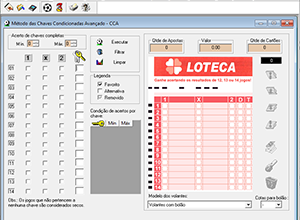Mastering Aoomaal Management: Strategies for Financial Success

Aoomaal, often spelled as “Ammal” or “Amwal,” is a term originating from Arabic, and primarily used in Islamic finance to refer to wealth or assets. It encompasses various forms of resources and possessions that individuals or entities possess. Understanding Aoomaal is crucial for effective financial management and decision-making.
Understanding Aoomaal
What is Aoomaal?
Aoomaal encompasses all types of assets owned by individuals, organizations, or governments. These assets can range from physical properties and investments to intellectual properties and financial holdings. Essentially, Aoomaal represents the total value of an entity’s wealth.
Importance of Aoomaal
Aoomaal holds significant importance in both personal and business contexts. It serves as a measure of financial health and stability, indicating the resources available for investment, consumption, or other purposes. Proper management of Aoomaal is essential for achieving financial goals and ensuring long-term sustainability.
The Components of Aoomaal
Aoomaal can be categorized into three main components:
Tangible assets
These include physical properties such as real estate, vehicles, machinery, and inventory. Tangible assets have a physical form and can be seen and touched.
Intangible assets
Intangible assets encompass non-physical assets such as patents, trademarks, copyrights, goodwill, and intellectual property rights. While they lack a physical presence, intangible assets hold significant value and contribute to overall Aoomaal.
Financial assets
Financial assets comprise investments in stocks, bonds, mutual funds, savings accounts, and other financial instruments. These assets generate returns in the form of interest, dividends, or capital gains.
Managing Aoomaal
Effective management of Aoomaal is essential for optimizing its value and ensuring sustainable growth.
Strategies for effective management
Implementing sound financial planning, diversifying investments, and minimizing risks are key strategies for managing Aoomaal efficiently. Additionally, adopting prudent spending habits and maintaining a balanced portfolio contribute to long-term wealth preservation.
Importance of asset management
Asset management involves overseeing the acquisition, utilization, and disposal of assets to maximize their value and benefit. It plays a crucial role in optimizing resource allocation and enhancing overall financial performance.
Measuring Aoomaal
Measuring Aoomaal involves assessing its value and performance using various metrics and indicators.
Metrics and indicators
Key performance indicators (KPIs) such as return on investment (ROI), asset turnover ratio, and net worth are commonly used to evaluate Aoomaal. These metrics provide insights into the efficiency and profitability of asset utilization.
Tools for measurement
Financial management software, accounting systems, and asset tracking tools facilitate the measurement and analysis of Aoomaal. These tools streamline the process of monitoring financial transactions and tracking asset performance.
Enhancing Aoomaal
To enhance Aoomaal, individuals and organizations can adopt various strategies aimed at increasing wealth and improving financial well-being.
Growth strategies
Investing in high-yield opportunities, expanding business operations, and diversifying revenue streams are effective strategies for growing Aoomaal. Embracing innovation and exploring new markets can also drive sustainable growth.
Innovation and development
Continuous innovation and development are essential for maintaining competitiveness and adapting to evolving market dynamics. Investing in research and development initiatives and fostering a culture of innovation can create new opportunities for Aoomaal enhancement.
The Role of Aoomaal in Business
Aoomaal plays a critical role in shaping business decisions and influencing organizational performance.
Aoomaal as a competitive advantage
Effective Aoomaal management can provide businesses with a competitive edge by enabling strategic investments, resource optimization, and risk mitigation. It enhances financial resilience and positions organizations for long-term success.
Impact on decision-making
Aoomaal data and insights inform strategic decision-making processes, guiding resource allocation, investment prioritization, and operational planning. By aligning financial objectives with business goals, Aoomaal empowers decision-makers to drive growth and profitability.
Challenges in Aoomaal Management
Despite its significance, Aoomaal management is not without challenges.
Risk management
Mitigating financial risks such as market volatility, credit risk, and liquidity constraints requires proactive risk management strategies and effective hedging mechanisms.
Regulatory compliance
Navigating complex regulatory frameworks and ensuring compliance with legal requirements pose challenges for Aoomaal management. Organizations must stay abreast of regulatory changes and adhere to industry standards to avoid penalties and reputational risks.
Technological advancements
Rapid advancements in technology, such as blockchain, artificial intelligence, and big data analytics, present both opportunities and challenges for Aoomaal management. Embracing digital transformation and leveraging innovative technologies can enhance operational efficiency and decision-making capabilities.
Case Studies
Examining real-world examples of successful Aoomaal management provides valuable insights into best practices and strategies.
Future Trends in Aoomaal
Anticipating future trends in Aoomaal management is crucial for staying ahead of the curve and capitalizing on emerging opportunities.
Predictions and forecasts
Experts predict continued digitization of Aoomaal management processes, increased focus on sustainable investing, and greater integration of environmental, social, and governance (ESG) factors into decision-making.
Emerging technologies
Technological advancements such as blockchain-based asset management platforms, robo-advisors, and predictive analytics tools are expected to revolutionize Aoomaal management practices, offering new ways to optimize performance and mitigate risks.
Conclusion
In conclusion, Aoomaal represents the total wealth and assets owned by individuals, organizations, or governments. Understanding, managing, and measuring Aoomaal are essential for achieving financial goals, driving business success, and ensuring long-term prosperity. Despite challenges, embracing innovation, adopting effective strategies, and staying informed about emerging trends can empower individuals and organizations to enhance their Aoomaal and secure a brighter financial future.



